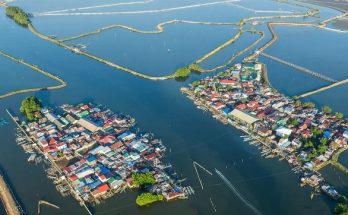#GlobalTemperature, #TemperatureHigh, #SeaSurfaceTemperature, #GlobalWarming
IBNS: Global average sea surface temperatures (SSTs) have been consistently high over the past five months, and remained at record-high levels for the time of year throughout April, May, June and July 2023.
This situation has continued into August, which saw both the highest daily global SST in the ERA5 record and the highest monthly average global SST, read the European Union’s Copernicus Climate Change Service website.
Typically, SSTs reach their highest level for the year in March and then begin to fall, before a slight increase again during July and August.
Copernicus Climate Change Service (C3S) data show this year to be atypical in that, after an initial sharp rise in early March and only a slight dip during April and May, global average SSTs have continued to rise to reach the highest value in the C3S ERA5 dataset of 21.02°C on 23 and 24 August.
This is higher than the previous record of 20.95°C, set in March 2016. In fact, every day from 31 July to 31 August this year has been warmer than the previous record set in March 2016.
As well as daily SSTs remaining consistently above average, last month saw the largest SST anomaly by far for any August in the dataset, at 0.55°C.
The monthly average SST for August, at 20.98°C, was higher than the previous record of 20.89°C, set in March 2016 and reached again in July this year
The high SSTs have coincided with the development of El Niño conditions in the equatorial Pacific, declared by the WMO in early July.
This naturally occurring climate pattern of warmer-than-average SSTs in the tropical Pacific leads to a higher likelihood of unusually warm temperatures across many parts of the planet.
However, high SSTs outside of the equatorial Pacific basin are also playing an important role. This is particularly true in the North Atlantic.
The average SSTs for the North Atlantic region increased in July and, by the end of the month, they came close to the previous daily record of 24.81°C set in September 2022.
This record was broken on 5 August, after which SSTs remained above this level, setting a new record of 25.19°C on 31 August. The average anomaly for August as a whole was 0.94°C, well above the previous record of August 2010 (0.48°C).
In June and July, exceptional SSTs and associated marine heatwaves were seen in large sectors of the North Atlantic, especially in the northeastern part in June, and unusually high SSTs also developed in the northwestern Atlantic in July.
In August, while some parts of the North Atlantic, such as southwest of the UK and Ireland, exhibited smaller anomalies or even negative anomalies compared to July, other areas have experienced warming. For example, August also saw the development of a marine heatwave off the Iberian Peninsula.
The warm tropical Atlantic SSTs have also contributed to an active month for the Atlantic hurricane season, with six tropical cyclones occurring in August 2023. By the end of the month, it was reported that accumulated cyclone energy (ACE) for the North Atlantic reached 138% of the average for the date.
The unprecedented SSTs have been associated with marine heatwaves; periods of unusually high ocean temperatures. These can have significant and sometimes devastating impacts on ocean ecosystems and biodiversity, and can lead to socio-economic impacts due to effects on fisheries, aquaculture, tourism and other industries.
A strong marine heatwave in the Atlantic, west of the Iberian Peninsula, strengthened during August, developing from moderate/category 1 to strong/category 2 (of 5) in the second half of the month.
Marine heatwave conditions continued south of Greenland, but reduced from severe/category 3 conditions in July (locally extreme/category 4), to strong/category 2 by the end of August. Marine heatwave conditions in the tropical Atlantic continued through June, July and August.
Heatwave conditions that developed in the Mediterranean in July reduced and mostly dissipated during the first half of August. However, strong/category 2 conditions developed again in the western part of the Mediterranean Basin in the second half of the month. These appear to have reduced again in the last few days of August.
Marine heatwave conditions spread across the western part of the Indian Ocean during August, with strong/category 2 conditions north of Madagascar and in the northern part of the Mozambique Channel, the Arabian Sea, and in the southern part of the Bay of Bengal.
In August, the tropical Pacific experienced strong/category 2 to severe/category 3 marine heatwave conditions, associated with El Niño. Strong/category 2, and locally severe/category 3 marine heatwave conditions developed off Japan.





